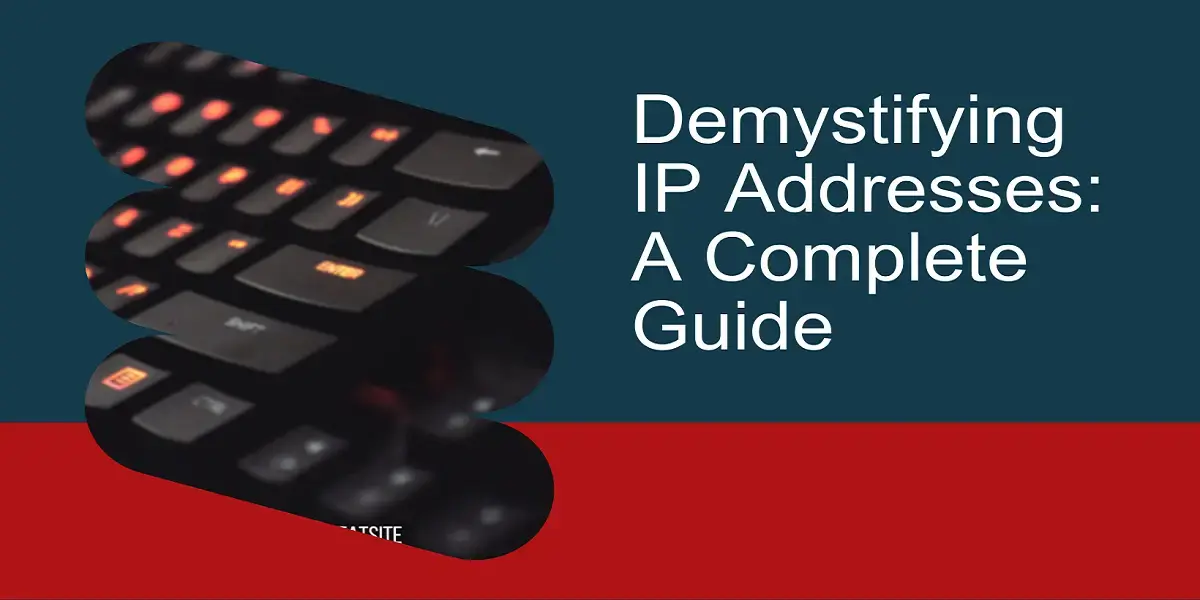![]()

November 30, 2023
Demystifying IPv4 Address Configuration: Unraveling the Web of Digital Connectivity
In the vast realm of the internet, where every click leads to a cascade of data exchange, the backbone is woven with a sophisticated tapestry of numbers – IPv4 addresses. Ever wondered how these strings of digits seamlessly guide your online endeavors? Let’s embark on a journey to decode the intricacies of IPv4 address configuration.
Understanding the Basics of IPv4
What is an IPv4 Address?
At its core, an IPv4 address is a unique identifier assigned to each device connected to a network. It’s akin to a postal code for your digital gadgets, ensuring that data packets reach the intended destination. Imagine your computer, smartphone, or gaming console having its distinct address in the vast digital neighborhood.
Breaking Down the Numbers
IPv4 addresses, often expressed in dotted-decimal format (e.g., 192.168.0.1), consist of four sets of numbers ranging from 0 to 255. Each set is separated by dots, forming a 32-bit binary number. This binary sequence, however, is a language only understood by machines. The familiar decimal format is the translation that makes it comprehensible to us.
Configuration Process Unveiled
Dynamic vs. Static IPv4 Addresses
In the dynamic dance of digital communication, devices can either have dynamic or static IPv4 addresses. Dynamic addresses are assigned by a DHCP (Dynamic Host Configuration Protocol) server, offering flexibility as devices join or leave a network. On the other hand, static addresses are manually set, providing a fixed point for a specific device.
Subnetting: The Art of Segmentation
Subnetting is the strategic partitioning of an IP network into sub-networks or subnets. It’s like dividing a sprawling city into neighborhoods, enhancing organization and management. Each subnet operates as a mini-network within the larger network, streamlining data flow and fortifying security.
Navigating the Maze of IPv4 Configuration
Private vs. Public IPv4 Addresses
Picture your home network as a private sanctuary, shielded from the chaotic web by a router. Devices within this enclave use private IPv4 addresses. However, when venturing into the boundless internet, they don a public address, akin to a public persona assumed when mingling in a crowded marketplace.
Port Forwarding: Opening Gates for Data
Just as your front door allows specific individuals to enter your home, port forwarding directs data traffic to designated devices within a private network. It’s akin to having a personal concierge for your data packets, ensuring they reach the correct destination within your digital domain.
The Dynamics of IPv4 in the Modern Digital Landscape
IPv6: A Glimpse into the Future
With the burgeoning number of internet-connected devices, the IPv4 address space faces exhaustion. Enter IPv6, the evolutionary successor. Imagine IPv6 as a sprawling metropolis with an almost inexhaustible number of addresses. Embracing IPv6 is like upgrading from a cozy townhouse to a skyscraper in the ever-expanding digital cityscape.
Security Considerations
In the bustling online realm, security is paramount. IPv4 address configuration plays a crucial role in fortifying digital defenses. Firewalls, intrusion detection systems, and stringent access controls are like vigilant sentinels, safeguarding the pathways of data flow against unwarranted intrusions.
Conclusion
In the symphony of digital orchestration, IPv4 address configuration emerges as a silent maestro, conducting the seamless flow of data. Understanding its nuances empowers users to navigate the vast internet landscape confidently. As we forge ahead into the future, the evolution of addressing systems like IPv6 will continue to shape the way we connect and communicate.
Frequently Asked Questions (FAQs)
1. Can I manually configure my device’s IPv4 address?
Yes, you can. This is known as assigning a static IP address. However, it’s crucial to ensure that the chosen address doesn’t conflict with other devices on the network.
2. How does subnetting enhance network security?
Subnetting creates isolated segments within a network. In the event of a security breach, the impact is contained within that specific subnet, preventing the compromise of the entire network.
3. Why is IPv6 necessary when we already have IPv4?
IPv6 addresses the limitations of IPv4, providing an expansive pool of unique addresses to accommodate the ever-growing number of internet-connected devices.
4. What role does DHCP play in IPv4 configuration?
DHCP automates the assignment of dynamic IP addresses to devices on a network, streamlining the configuration process and ensuring efficient resource utilization.
5. How can I check my device’s IPv4 address?
On Windows, you can use the command ‘ipconfig’ in the Command Prompt. On macOS or Linux, ‘ifconfig’ or ‘ip addr’ in the terminal will display the information.
Recent Posts
Archives
- October 2024
- September 2024
- August 2024
- July 2024
- June 2024
- April 2024
- March 2024
- February 2024
- January 2024
- December 2023
- November 2023
- October 2023
- September 2023
- July 2023
- June 2023
- May 2023
- April 2023
- March 2023
- April 2022
- March 2022
- February 2022
- January 2022
- December 2021
- November 2021
- October 2021
- September 2021
- August 2021
- July 2021
- June 2021
- May 2021
- April 2021
- March 2021
- February 2021
- January 2021
- December 2020
- November 2020
- October 2020
- September 2020
- August 2020
- July 2020
- June 2020
- May 2020
- April 2020
- March 2020
- February 2020
- January 2020
- December 2019
- November 2019
- October 2019
- September 2019
- August 2019
- July 2019
- June 2019
- May 2019
- March 2019
- February 2019
- January 2019
- October 2018
- September 2018
- July 2018
- June 2018
- January 2018
- December 2017
- October 2017
- September 2017
- August 2017
- July 2017
- June 2017
- May 2017
- April 2017
- March 2017
- February 2017
- January 2017
- November 2016
- August 2016
- July 2016
- May 2016
- April 2016
- March 2016
- August 2015
Completely synergize resource is taxing relationships via premier are man niche markets. Professionally cultivate one to one customer.
Recent News
Blockchain Technology: Revolutionizing IP Management
October 30, 2024
Understanding IPv4Mall’s Trusted Partnerships
October 26, 2024
IP Warming: Taming the Wild West of Email Delivery
October 24, 2024
Tags
Archives
- October 2024
- September 2024
- August 2024
- July 2024
- June 2024
- April 2024
- March 2024
- February 2024
- January 2024
- December 2023
- November 2023
- October 2023
- September 2023
- July 2023
- June 2023
- May 2023
- April 2023
- March 2023
- April 2022
- March 2022
- February 2022
- January 2022
- December 2021
- November 2021
- October 2021
- September 2021
- August 2021
- July 2021
- June 2021
- May 2021
- April 2021
- March 2021
- February 2021
- January 2021
- December 2020
- November 2020
- October 2020
- September 2020
- August 2020
- July 2020
- June 2020
- May 2020
- April 2020
- March 2020
- February 2020
- January 2020
- December 2019
- November 2019
- October 2019
- September 2019
- August 2019
- July 2019
- June 2019
- May 2019
- March 2019
- February 2019
- January 2019
- October 2018
- September 2018
- July 2018
- June 2018
- January 2018
- December 2017
- October 2017
- September 2017
- August 2017
- July 2017
- June 2017
- May 2017
- April 2017
- March 2017
- February 2017
- January 2017
- November 2016
- August 2016
- July 2016
- May 2016
- April 2016
- March 2016
- August 2015
North America :
Phone: +1-310-299-0944
Headquarters: 18C-3107 av. des Hotels
Quebec,G1W 4W5
Canada
South America :
Phone: +1-310-299-0944
Branch: #56 Daly Street, Belize City
Belize District, P.O. Box 1825
Belize











Recent Comments